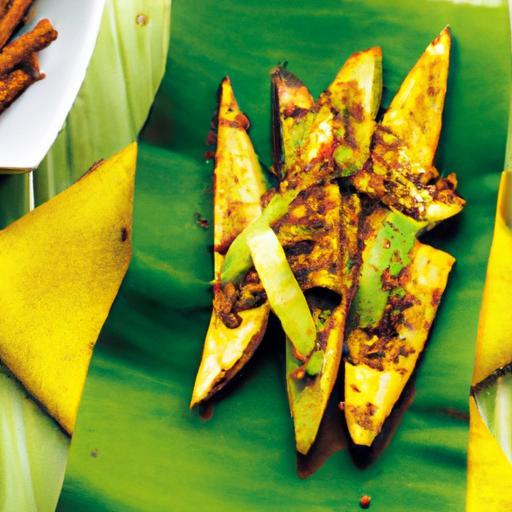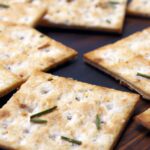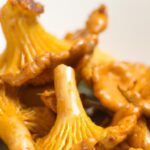In the quiet corners of gardens and along sunlit pathways, a humble green leaf has been quietly nurturing humanity for centuries. Plantain leaves-often overlooked as mere weeds-harbor a treasure trove of natural healing secrets waiting to be rediscovered. From soothing insect bites to calming skin irritations, these unassuming leaves offer a gentle, plant-powered remedy that connects us to nature’s wisdom. In this article, we’ll uncover the rich history, powerful properties, and practical uses of plantain leaves, inviting you to explore the art of natural healing through one of the earth’s simplest yet most effective gifts.
Healing Secrets: Using Plantain Leaves for Natural Remedies unlocks a world of traditional wisdom passed down through generations-inviting you to harness the gentle power of plantain leaves to soothe skin ailments, ease digestion, and calm inflammation naturally. This humble green, often overlooked, has been a cornerstone in folk medicine with a reputation for remarkable healing properties.
Prep and Cook Time
Preparation: 10 minutes | Infusion/Steeping Time: 20 minutes | Total Time: 30 minutes
Yield
Approximately 2 cups of medicinal infusion or 3 topical compresses
Difficulty Level
Easy – perfect for beginners and herbal enthusiasts alike
Ingredients
- 10 fresh plantain leaves, thoroughly washed and free from damage
- 2 cups of filtered water
- 1 tablespoon raw honey (optional, for soothing topical applications)
- 1 teaspoon apple cider vinegar (optional, to enhance digestive benefits)
- Thin cotton cloths or cheesecloth (for compresses)
Instructions
- Prepare the leaves: Gently pat the plantain leaves dry with a clean towel. Tear or chop them roughly to release their natural oils and active compounds.
- Make the infusion: In a saucepan, bring 2 cups of filtered water to a gentle boil. Remove from heat and add the plantain leaves immediately.
- Steep the leaves: Cover the saucepan with a lid and allow the leaves to steep for 20 minutes, turning the leaves once halfway to ensure even extraction.
- Strain carefully: Using a fine mesh strainer or cheesecloth, pour the liquid into a clean container-this is your plantain leaf tea, rich in anti-inflammatory and astringent properties.
- For skin applications: Let the infusion cool to room temperature. Soak a thin cotton cloth in the tea, wring out excess liquid, and apply gently to irritated skin, burns, or insect bites. Add a teaspoon of honey to the cloth for extra moisture and healing, if desired.
- For digestive aid: Before drinking, stir in a teaspoon of apple cider vinegar to aid stomach health and enhance the infusion’s natural benefits. Sip slowly, ideally before meals.
- Compress preparation: Fresh leaves can also be lightly crushed and applied directly to affected areas for relief from inflammation. Secure with a clean cloth to keep leaves in place for 15-20 minutes.
- Storage: Store any leftover infusion in a sealed glass jar in the refrigerator, using it within 48 hours for optimal freshness.
Tips for Success
- Harvest sustainably: Only pick mature leaves from healthy plants, leaving at least two-thirds of the plant intact. Avoid polluted areas near roads or industry.
- Substitution: If fresh leaves are unavailable, dried plantain leaves can be used but increase steeping time to 30 minutes for stronger potency.
- Patch test: Always perform a small skin test before applying to larger areas to rule out allergies or sensitivities.
- Use organic: Wherever possible, choose wild-crafted or organic plantain leaves to avoid pesticides and maximize healing effect.
- Enhanced potency: Gently bruising leaves before steeping releases more active compounds; however, avoid crushing too finely as this can cloud the tea.
Serving Suggestions
Present the chilled plantain leaf infusion in clear glass jars or mason jars to showcase its pale green hue. Garnish the tea with a small sprig of fresh mint or lemon zest for a refreshing aroma when sipping as a digestive tonic. For topical remedies, arrange freshly washed plantain leaves on a wooden board next to cotton wraps and a small bowl of honey, inviting a serene, ritualistic experience. Displaying alongside a handcrafted herbal journal or your favorite mortar and pestle enhances the natural healing ambiance.
| Nutrient | Per 100ml Infusion | Benefit |
|---|---|---|
| Calories | 5 kcal | Low in calories, safe for daily use |
| Protein | 0.1 g | Supports tissue repair |
| Carbohydrates | 1 g | Natural source of energy for skin cells |
| Fat | 0 g | Free of fats and cholesterol |
Discover more natural healing techniques in our Herbal Healing 101 article and deepen your knowledge on plant-based remedies. For more on plantain’s scientific benefits and phytochemistry, visit the comprehensive guide at NCBI – Plantain Leaf Phytochemistry.

Q&A
Q&A: Healing Secrets – Unlocking the Power of Plantain Leaves for Natural Remedies
Q1: What exactly are plantain leaves, and are they related to the banana-like fruit called plantains?
A1: Great question! Despite sharing a name with the banana-like fruit, plantain leaves come from a humble, hardy little weed known as Plantago major (broadleaf plantain) or Plantago lanceolata (narrowleaf plantain). These low-growing plants are common worldwide, often found peeking through cracks in sidewalks or spreading in grassy fields-true botanical underdogs with surprising healing prowess.
Q2: Why have plantain leaves been used in natural remedies throughout history?
A2: For centuries, folk healers and herbalists have treasured plantain leaves because of their potent anti-inflammatory, antimicrobial, and skin-soothing properties. Their natural compounds-like allantoin, flavonoids, and tannins-work together to calm irritation, promote healing, and protect delicate skin tissues. Ancient traditions around the globe regarded plantain as a “first-aid leaf” for scrapes, bug bites, and respiratory woes.
Q3: What are some common ailments that plantain leaves can help soothe or heal?
A3: Plantain leaves are nature’s multitaskers! They’re often used to:
- Ease insect bites and stings by reducing itching and swelling
- Soothe minor cuts, scrapes, and burns, promoting faster skin regeneration
- Calm skin conditions like eczema and rashes with gentle anti-inflammatory effects
- Relieve congestion and coughs when brewed into a tea, thanks to their expectorant qualities
- Support digestive health by acting as a mild anti-inflammatory and antimicrobial agent
Q4: How do you prepare plantain leaves for healing purposes?
A4: There are several ways to unlock their healing magic:
- Topical poultice: Crush fresh leaves into a moist paste and apply directly to the affected area to soothe and speed recovery.
- Infused oil or salve: Steep leaves in carrier oil, then blend into a salve to create a longer-lasting skin remedy.
- Herbal tea: Dry the leaves and steep them in hot water to enjoy a healthful, soothing tea for respiratory or digestive support.
Always ensure leaves are clean and harvested from safe, pesticide-free areas!
Q5: Are there any precautions or side effects when using plantain leaves as medicine?
A5: Plantain leaves are generally considered safe for topical and internal use, but it’s wise to perform a patch test for skin sensitivity first-nature’s remedies can occasionally trigger mild allergic reactions. If you’re pregnant, nursing, or on medication, consult with a healthcare provider before incorporating plantain remedies into your routine. Remember, while plantain is a powerful ally, it complements rather than replaces professional medical care.
Q6: Can anyone grow their own plantain leaves for these natural remedies?
A6: Absolutely! Plantain is notoriously easy to grow and almost impossible to kill, making it the perfect herbal starter plant. It thrives in a variety of soils and climates, requiring little attention. Cultivate your own patch for a ready supply of healing leaves-your backyard pharmacy awaits!
Q7: What makes plantain leaves stand out compared to other herbal remedies?
A7: Their accessibility and versatility set plantain apart. You don’t need a green thumb or a fancy herbalist’s toolkit-just a keen eye in your local park or garden. Plus, their gentle yet effective healing compounds make them suitable for all ages and many ailments. In the world of natural medicine, plantain leaves are truly a quietly powerful healer, bridging tradition and everyday wellness.
With plantain leaves in your natural remedy toolkit, healing becomes as simple and abundant as the green blades themselves-ready to soothe nature’s scratches and stir wellness back into your life.
In Retrospect
As we close the chapter on the humble plantain leaf, it’s clear that this unassuming green holds a treasure trove of healing wisdom passed down through generations. From soothing scrapes and bites to calming inflammation and promoting skin vitality, plantain leaves offer a gentle yet powerful reminder that nature’s pharmacy is often closer than we think. Embracing these time-tested remedies not only connects us to the earth’s rhythms but also invites a more mindful, holistic approach to wellness. So next time you stumble upon this common plant, remember: within its leaves lies a natural secret waiting to nurture your body and spirit, one healing touch at a time.


